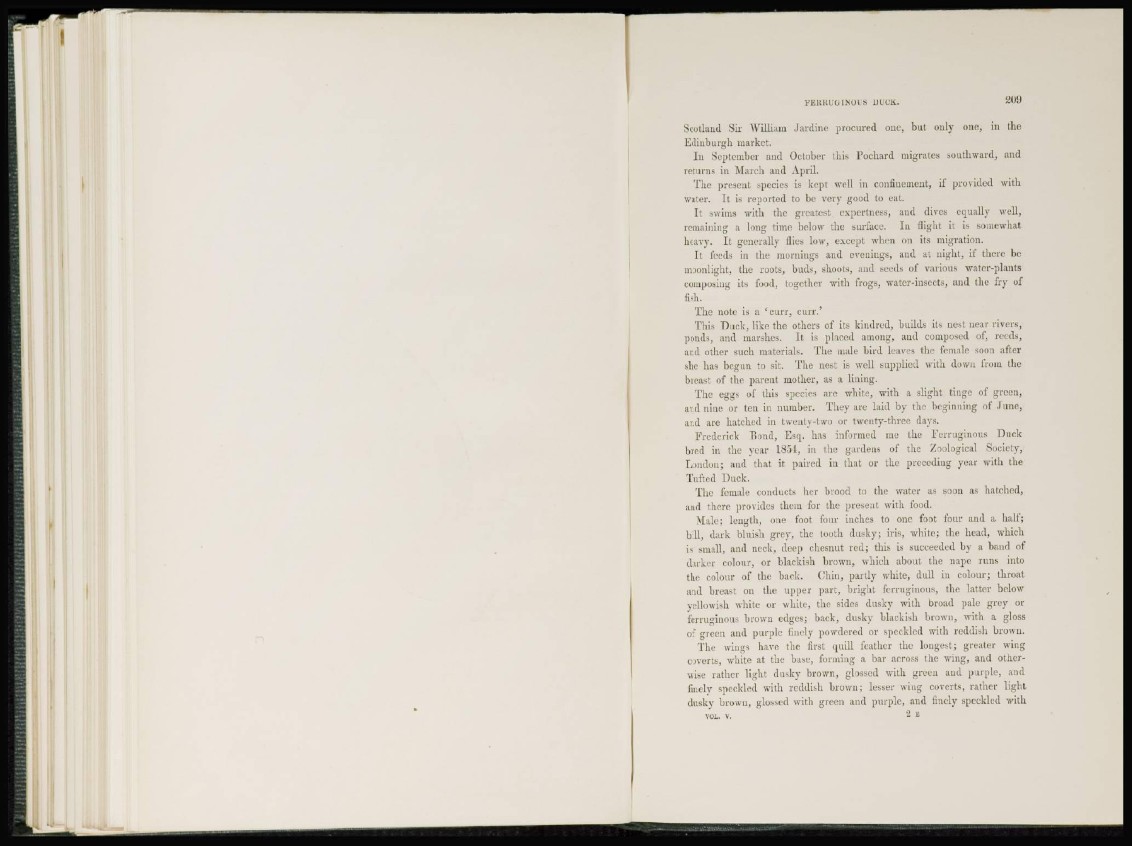
Scotland Sir William Jardine procured one, but only one, in the
Edinburgh market.
I n September and October this Pochard migrates southward, and
returns in March and April.
The present species is kept well in confinement, if provided with
water. It is reported to be very good to cat.
It swims with the greatest cxpertness, aud dives equally well,
remaining a long time below the surface. In flight it is somewhat
heavy. It generally flies low, except when on its migration.
I t feeds in the mornings and evenings, and at night, if there be
moonlight, the roots, buds, shoots, aud seeds of various water-plants
composing its food, together with frogs, water-insects, and the fry of
fish.
The note is a ' c u r r , eurr.'
This Duck, like the others of its kindred, builds its nest near rivers,
ponds, and marshes. It is placed among, and composed of, reeds,
and other such material-. The male bird leaves the female soon after
she has begun to sit. The nest is well supplied with down from the
breast of the parent mother, as a lining.
The eggs of this species are white, with a slight tinge of green,
aud nine or ten in number. They are laid by the beginning of .lime,
and are hatched in twenty-two or twenty-three days.
Frederick Ilond, Esq. has informed me the Ferruginous Duck
bred in the year 1854, in the gardens of the Zoological Society,
London; and that it paired in that or the preceding year with the
Tufted Duck.
The female conducts her brood to the water as soon as hatched,
and there provides thcin for the present with food.
Male; length, one foot four inches to one foot four and a half;
bill, dark bluish grey, the tooth dusky; iris, white; the head, which
is small, and neck, deep chesnut red; this is succeeded by a band of
darker colour, or blackish brown, which about the nape runs into
the colour of the back. Chin, partly white, dull in colour; throat
aud breast on the upper part, bright ferruginous, the latter below
yellowish white or white, the sides dusky with broad pale grey or
ferruginous brown edges; back, dusky blackish brown, with a gloss
of green and purple finely powdered or speckled with reddish brown.
The wings have the first quill feather the longest; greater wing
coverts, white at the base, forming a bar across the wing, and otherwise
rather light dusky brown, glossed with green aud purple, and
finely speckled with reddish brown; lesser wing coverts, rather light
dusky brown, glossed with green and purple, and finely speckled with
VOL. v. '2 1